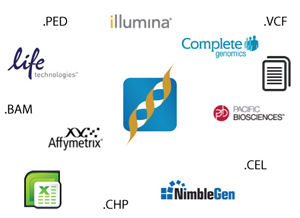Thank you to everyone who joined us yesterday for a webcast by Dr. Ken Kaufman of Cincinnati Children’s Hospital: “Identification of Candidate Functional Polymorphism Using Trio Family Whole Exome DNA Data.” Over 750 people registered for this event and 430 attended – a new Golden Helix record! If you missed the webcast (or would like to watch it again), the… Read more »
My work in the GHI analytical services department gives me the opportunity to handle data from a variety of sources. I have learned over time that every genotyping platform has its own personality. Every time we get data from a new chip, I tend to learn something new about the quirks of genotyping technology. I usually discover these quirks the… Read more »
The Golden Helix sales team recently came to me for recommendations regarding best practices for incorporating public controls in SNP GWAS. It seems that there has been a surge of questions regarding this practice over the past few weeks from our customers. Initially, I laughed at the irony of being asked to outline the best practices for what I see… Read more »
Over the past 3 years, Golden Helix has analyzed dozens of public and customer whole-genome and candidate gene datasets for a host of studies. Though genetic research certainly has a number of complexities and challenges, the number one problem we encounter, which also has the greatest repercussions, is born of problematic experimental design. In fact, about 95% of the studies… Read more »
In the paper Runs of homozygosity reveal highly penetrant recessive loci in schizophrenia, Todd Lencz, Ph.D. introduced a new way of doing association testing using SNP microarray platforms. The method, which he termed “whole genome homozygosity association”, first identifies patterned clusters of SNPs demonstrating extended homozygosity (runs of homozygosity or “ROHs”) and then employs both genome-wide and regionally-specific statistical tests… Read more »


